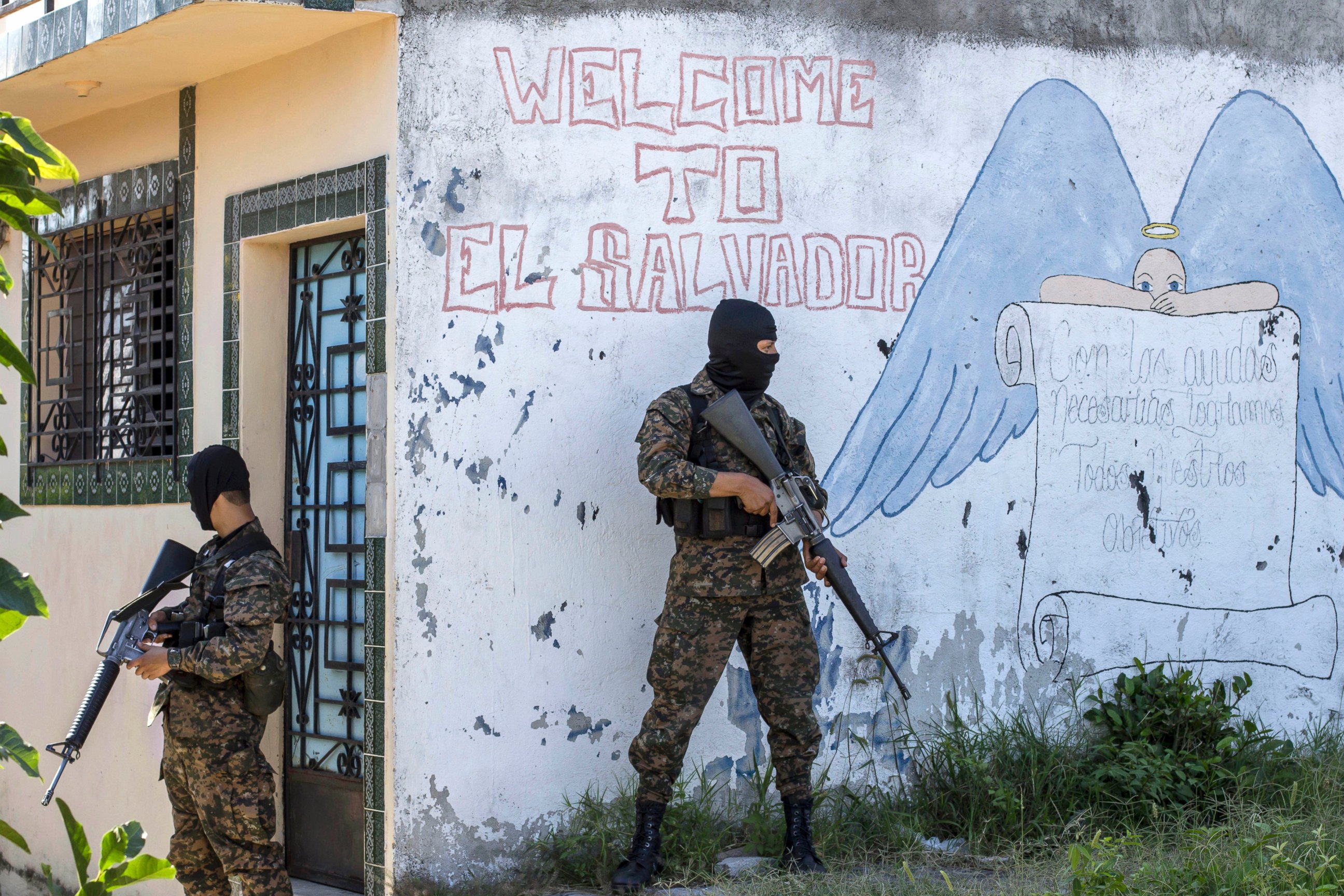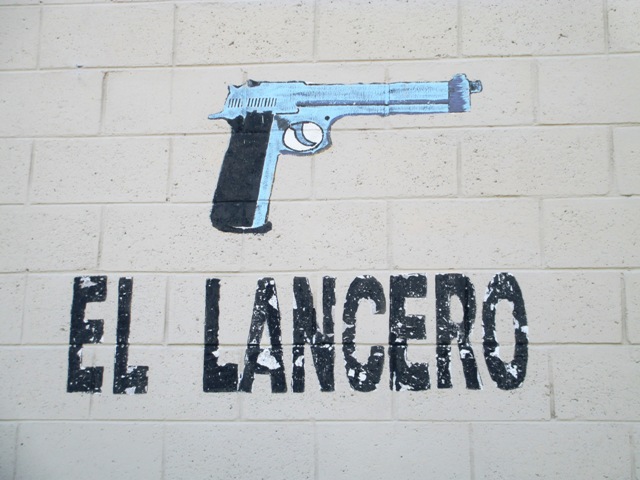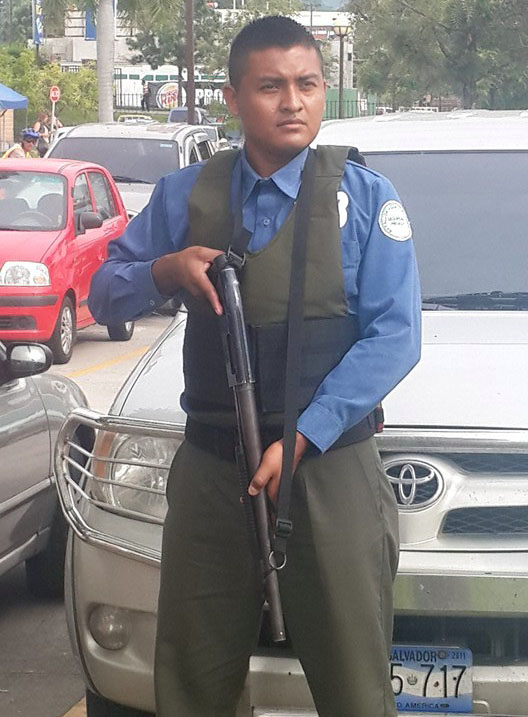Author: Sarah Kinosian
Editor’s Note: We recently took a look at gangs and organized crime in El Salvador. But, with the open and ongoing conflict between security forces and gangs, how government security forces are impacting the population is also critical to examine. This article is the third in this series on violence in El Salvador.
In El Salvador, over 80 percent of murders were carried out with guns in 2015. Loose enforcement of existing Salvadoran laws, limited U.S. gun controls, military corruption and lax oversight of large caches of civil war-era arms have made it relatively easy for criminals to access such firepower.
There is not one primary source or channel of arms for criminal groups. According to the U.S. Alcohol, Tobacco, and Firearms (ATF), almost 50 percent of the guns found at crime scenes in El Salvador in 2014 and filed into their e-Trace – ATF’s gun-tracking database – are from the United States. As the Action on Armed Violence (AOAV) explained in a 2014 report, these arms reach criminals in El Salvador through multiple channels: “some weapons make their way from the civilian market into the black market, some are sourced from the stockpiles held by the militaries, others are recovered from civil war-era guerrilla arms caches, and some are imported from outside the country by or on behalf of criminal syndicates.”
According to a government source close to the issue, El Salvador’s gangs have significantly grown their weapons arsenals in the past year using these means, demonstrated by the fact that gang members are now much quicker to leave guns behind at crime scenes. Contrary to Salvadoran government reports, the weapons of choice for the gangs are mainly semi-automatic handguns and revolvers, as opposed to more military-grade anti-tank weapons and machine guns like M-16s or AK-47s. Such high-powered arms are likely leftovers from the civil war (1980-1992) and are mostly used by more powerful criminal groups in specific instances. All guns in El Salvador come from outside the country – it has no domestic gun manufacturers. While many firearms flow in along the same routes used to traffic drugs up to the United States, many also come down from the United States in shipments of old appliances and car parts. In either case, it is not large-scale traffickers that are the main players in the arms trade. “It is not so much the transnational criminal organizations that are moving guns,” a security observer told us, “just your bread-and-butter small-scale arms traffickers, which in many ways makes it much more difficult to track.” Throughout Central America these arms flow across porous borders and unpatrolled waters with ease. And business is thriving: “Borders are porous for guns, because guns are a business in this country. People in power own guns.”
Of the U.S.-sourced guns on the black market, many are smuggled down through Mexico, primarily from cities with the largest Salvadoran diaspora communities, including Los Angeles, Baltimore, and Boston. In addition to being the number one arms supplier on the black market, the United States is also the top source country for all guns legally entering El Salvador, according to the Norwegian Initiative on Small Arms Transfers.
Beyond concerns over transnational trafficking are worries about arms from current military and police arsenals falling into criminal hands. As the government source noted, “many times a criminal will be arrested with a gun, which is later traced in another crime [though it had been confiscated and should have been in police custody], so we know they are stolen out of vaults by military or police.”

|
The fact that some members of the Salvadoran military sell stolen weapons on the black market is not new—there have been several cases of members of the military stealing and trafficking weapons, everything from M-60s (the guns often shot from the top of a tank), to rocket launchers, to ammunition, and grenades. It is unclear exactly how this issue has played out in the security relationship with the United States, but it likely contributed to the massive drop in U.S. government arms sale authorizations and deliveries to the country, now at their lowest point in over 20 years.
Multiple sources told us that the military was directly involved in arms trafficking. In its study AOAV also found “numerous sources in government and within the gangs themselves [who] described easy access to the weapons either directly via corrupt military personnel or indirectly through middlemen.”
Aside from the guns being smuggled out of current security force arsenals, there are a significant number of arms also reportedly slipping out of military stockpiles — these are weapons not used by active-duty security forces and include arms leftover from the civil war as well as some recovered from illegal stockpiles following the war. “These stockpiles represent one of the greatest proliferation risks in El Salvador. They contain thousands of weapons of all descriptions and sizes, from handguns to anti-tank weapons. There is very little transparency regarding such holdings,” reported AOAV. According to the report and confirmed by our own interviews, there is very little oversight of these stockpiles. While there is little data available concerning the size and scope of security force caches in general, existing numbers suggest these stockpiles are sizeable. According to the Small Arms Survey, between 1980-1993, the United States supplied the Salvadoran military with almost 37,500 guns (including 32,500 M-16s) and nearly 270,000 grenade, making the country the number one recipient of U.S. military hardware in the Western Hemisphere during the 1980s.
But traffickers and security forces are not the only source of weapons — there are also reportedly plentiful stashes of other civil war-era arms used by the Farabundo Martí National Liberation Front (FMLN), mostly soviet-type weapons and ammunition, that the group never turned over after the peace accords. As AOAV found, “finding, repairing and selling those weapons is one of the ways that illicit arms dealers and middlemen do business.” While most parts for these arms are harder to find in neighboring Honduras and Guatemala, who source most of their firearms from Western countries, they can often be found in Nicaragua, which also had a period of civil war fueled by arms from the Soviet Union and the United States, and whose security forces still use soviet-type arms.

|
On paper, El Salvador has fairly strong gun control laws —all buyers must pass background checks administered by police, before picking up their gun they must pass a safety and proficiency course, and citizens cannot own automatic rifles, among other measures. But these rules are loosely enforced, meaning that many guns seamlessly drift from the civilian market over to the country’s extensive black market. Although straw purchasing is legal, meaning that guns can even be bought with someone else’s power of attorney, due to the strict guns laws, it is not the main source of criminal firepower.
A bigger cause for concern is the relationship between the Ministry of Defense and gun retailers. Because the army regulates gun sales and gun stores are mostly owned, and run, by former members of the military, the Defense Ministry does not necessarily have a vested interest in cracking down on the gun market or providing reliable data. This means there are rarely penalties for irregularities in sales or imports. As AOAV noted, there is inconsistent and inadequate data from the Ministry of Defense on the numbers of registered and unregistered guns.

|
Some of the biggest purchasers of illegal arms are allegedly private security companies, hired by businesses and wealthy individuals and growing in popularity as government security forces fail to drive down crime and violence. The firepower that companies such as Eagle Battalion and Blue Star Security pack is evident on the street —most commercial establishments and gated communities have guards with prominent 12-gauge revolvers slung across their chests. The largest estimate of private security was reported to be over 25,000 personnel employed by more than 400 companies in 2008 (the country’s national police force has around 20,000). The Small Arms Survey found that there is about one gun for every private security guard in the country. While there is no recent official public data, even their legally-purchased firearms end up on the black market – a report from 2011 found that over 1,700 guns registered to private security companies were reported missing over two years.
Now, according to several citizens we interviewed, it is not just criminals and security companies buying guns for protection but, “people without faith in the justice system who are arming themselves,” adding more arms to an ever-escalating conflict.
As the military continues to deploy onto the streets, as the gangs continue to target police, as anonymous vigilante groups continue to rise, and as murder rates continue to climb, El Salvador will see an incalculable loss of life in 2016. But those supplying the firepower stand to win.


